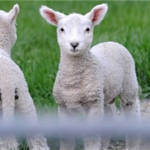 Nearly two million more lambs have been tailed this spring, according to the latest figures, which also forecast 8.4 percent more available for processing this season.
Nearly two million more lambs have been tailed this spring, according to the latest figures, which also forecast 8.4 percent more available for processing this season.
Lamb Crop 2012, the latest report from Beef + Lamb New Zealand’s Economic Service, shows that an estimated 26.9 million lambs were tailed, 1.9 million more than last year.
Even then, this will be the third smallest lamb crop since the early 1950s. Only the previous two years were lower.
This year’s increase was due to slightly more ewes mated (+0.6 percent) and the sheep being in good condition thanks to favourable feed conditions before mating. There was also an increase in the number of lambs born from hoggets, according to Economic Service executive director, Rob Davison.
“The average lambing percentage across the country was 123 lambs born per hundred ewes – up from 119 in 2011.”
Davison said this result confirmed the pregnancy scanning results from earlier in the year, signalled in September’s New Season Outlook 2012-13.
“There were pockets of unfavourable weather in some areas during lambing, but farm management practices ensured good lamb survival,” Davison said.
In the North Island, there was a small increase (1.2 percent) in the number of breeding ewes compared with last spring and good lambing weather, combined with stock in good condition, drove the lambing percentage up from 118 percent to 123 percent.
In the South Island, ewe numbers were the same as last season, but the number of lambs born was higher. The lambing percentage increased from 121 percent to 123 percent and the weather was a lot better than the year before.
“Significantly there was a sharp increase in the number of lambs from hoggets because more were mated due to favourable feed conditions. Also evident, was a structural change to a younger flock, with more than usual older and poorer performing ewes culled before mating.”
The B+LNZ Economic Service forecasts that there will be 20.5 million lambs available for processing in the 2012-13 season – up an estimated 8.4 per cent. This contrasts with last season’s 18.9 million, which was the lowest since 1960-61.
The increase will be partially offset by an expected 2.1 percent decrease in average carcase weight to 18.3 kg. This follows a return to more normal climatic conditions after good growing conditions last season saw lambs reach a record 18.7 kg.
Other key points from the report are:
- North Island export lamb slaughter estimated to increase 12 per cent to 9.9 million, an increase of 1.1 million lambs
- South Island export lamb slaughter estimated to go up 5.3 per cent to 10.6 million, an increase of 500,000 lambs
- While there will be more lambs, there has been a sharp correction in lamb prices – $5-6 per kg early in the season, compared to over $8 per kg in 2011.

